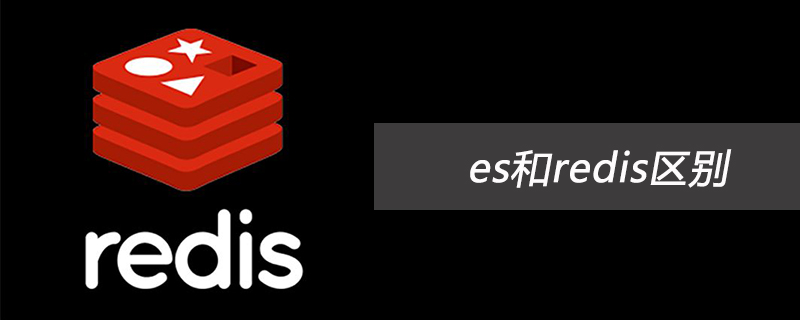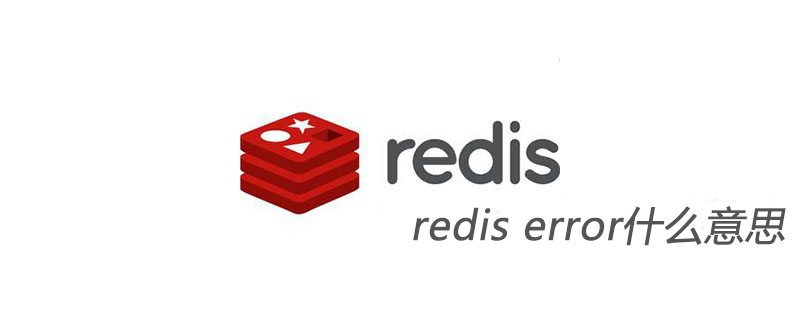While a big number of users use large farms of Redis nodes, from the point of view of the project itself currently Redis is a mostly single-instance business. I've big plans about going distributed with the project, to the extent that I'm
While a big number of users use large farms of Redis nodes, from the point of view of the project itself currently Redis is a mostly single-instance business.I've big plans about going distributed with the project, to the extent that I'm no longer evaluating any threaded version of Redis: for me from the point of view of Redis a core is like a computer, so that scaling multi core or on a cluster of computers is the same conceptually. Multiple instances is a share-nothing architecture. Everything makes sense AS LONG AS we have a *credible way* to shard :-)
This is why Redis Cluster will be the main focus of 2013 for Redis, and finally, now that Redis 2.6 is out and is showing to be pretty stable and mature, it is the right moment to focus on Redis Cluster, Redis Sentinel, and other long awaited improvements in the area of replication (partial resynchronization).
However the reality is that Redis Cluster is not yet production ready and requires months of work. Still our users already need to shard data on multiple instances in order to distribute the load, and especially in order to use many computers to get a big amount of RAM ready for data.
The sole option so far was client side sharding. Client side sharding has advantages as there are no intermediate layers between clients and nodes, nor routing of request, so it is a very scalable setup (linearly scalable, basically). However to implement it reliably requires some tuning, a way to take clients configuration in sync, and the availability of a solid client with consistent hashing support or some other partitioning algorithm.
Apparently there is a big news in the landscape, and has something to do with Twitter, where one of the biggest Redis farms deployed happen to serve timelines to users. So it comes as no surprise that the project I'm talking about in this blog post comes from the Twitter Open Source division.
Twemproxy
---
Twemproxy is a fast single-threaded proxy supporting the Memcached ASCII protocol and more recently the Redis protocol:
https://github.com/twitter/twemproxy
It is written entirely in C and is licensed under the Apache 2.0 License.
The project works on Linux and AFAIK can't be compiled on OSX because it relies on the epoll API.
I did my tests using my Ubuntu 12.04 desktop.
But well, I'm still not saying anything useful. What twemproxy does actually? (Note: I'll focus on the Redis part, but the project is also able to do the same things for memcached as well).
1) It works as a proxy between your clients and many Redis instances.
2) It is able to automatically shard data among the configured Redis instances.
3) It supports consistent hashing with different strategies and hashing functions.
What's awesome about Twemproxy is that it can be configured both to disable nodes on failure, and retry after some time, or to stick to the specified keys -> servers map. This means that it is suitable both for sharding a Redis data set when Redis is used as a data store (disabling the node ejection), and when Redis is using as a cache, enabling node-ejection for cheap (as in simple, not as in bad quality) high availability.
The bottom line here is: if you enable node-ejection your data may end into other nodes when a node fails, so there is no guarantee about consistency. On the other side if you disable node-ejection you need to have a per-instance high availability setup, for example using automatic failover via Redis Sentinel.
Installation
---
Before diving more inside the project features, I've good news, it is trivial to build on Linux. Well, not as trivial as Redis, but… you just need to follow those simple steps:
apt-get install automake
apt-get install libtool
git clone git://github.com/twitter/twemproxy.git
cd twemproxy
autoreconf -fvi
./configure --enable-debug=log
make
src/nutcracker -h
It is pretty trivial to configure as well, and there is sufficient documentation in the project github page to have a smooth first experience. For instance I used the following configuration:
redis1:
listen: 0.0.0.0:9999
redis: true
hash: fnv1a_64
distribution: ketama
auto_eject_hosts: true
timeout: 400
server_retry_timeout: 2000
server_failure_limit: 1
servers:
- 127.0.0.1:6379:1
- 127.0.0.1:6380:1
- 127.0.0.1:6381:1
- 127.0.0.1:6382:1
redis2:
listen: 0.0.0.0:10000
redis: true
hash: fnv1a_64
distribution: ketama
auto_eject_hosts: false
timeout: 400
servers:
- 127.0.0.1:6379:1
- 127.0.0.1:6380:1
- 127.0.0.1:6381:1
- 127.0.0.1:6382:1
Basically the first cluster is configured with node ejection, and the second as a static map among the configured instances.
What is great is that you can have multiple setups at the same time possibly involving the same hosts. However for production I find more appropriate to use multiple instances to use multiple cores.
Single point of failure?
---
Another very interesting thing is that, actually, using this setup does not mean you have a single point of failure, since you can run multiple instances of twemproxy and let your client connect to the first available.
Basically what you are doing with twemproxy is to separate the sharding logic from your client. At this point a basic client will do the trick, sharding will be handled by the proxy.
It is a straightforward but safe approach to partitioning IMHO.
Currently that Redis Cluster is not available, I would say, it is the way to go for most users that want a cluster of Redis instances today. But read about the limitations before to get too excited ;)
Limitations
---
I think that twemproxy do it right, not supporting multiple keys commands nor transactions. Currently is AFAIK even more strict than Redis Cluster that instead allows MULTI/EXEC blocks if all the commands are about the same key.
But IMHO it's the way to go, distribute the subset you can distribute efficiently, and pose this as a design challenge early to the user, instead to invest a big amount of resources into "just works" implementations that try to aggregate data from multiple instances, but that will hardly be fast enough once you start to have serious loads because of too big constant times to move data around.
However there is some support for commands with multiple keys. MGET and DEL are handled correctly. Interestingly MGET will split the request among different servers and will return the reply as a single entity. This is pretty cool even if I don't get the right performance numbers with this feature (see later).
Anyway the fact that multi-key commands and transactions are not supported it means that twemproxy is not for everybody, exactly like Redis Cluster itself. Especially since apparently EVAL is not supported (I think they should support it! It's trivial, EVAL is designed to work in a proxy like that because key names are explicit).
Things that could be improved
---
Error reporting is not always stellar. Sending a non supported command closes the connection. Similarly sending just a "GET" from redis-cli does not report any error about bad number of arguments but hangs the connection forever.
However other errors from the server are passed to the client correctly:
redis metal:10000> get list
(error) WRONGTYPE Operation against a key holding the wrong kind of value
Another thing that I would love to see is support for automatic failover. There are many alternatives:
1) twemproxy is already able to monitor instance errors, count the number of errors, and eject the node when enough errors are detected. Well it is a shame it is not able to take slave nodes as alternatives, and instead of eject nodes use the alternate nodes just after sending a SLAVE OF NOONE command. This would turn it into an HA solution as well.
2) Or alternatively, I would love if it could be able to work in tandem with Redis Sentinel, checking the Sentinel configuration regularly to upgrade the servers table if a failover happened.
3) Another alternative is to provide a way to hot-configure twemproxy so that on fail overs Sentinel could switch the configuration of the proxy ASAP.
There are many alternatives, but basically, some support for HA could be great.
Performances
---
This Thing Is Fast. Really fast, it is almost as fast as talking directly with Redis. I would say you lose 20% of performances at worst.
My only issue with performances is that IMHO MGET could use some improvement when the command is distributed among instances.
After all if the proxy has similar latency between it and all the Redis instances (very likely), if the MGETs are sent at the same time, likely the replies will reach the proxy about at the same time. So I expected to see almost the same numbers with an MGET as I see when I run the MGET against a single instance, but I get only 50% of the operations per second. Maybe it's the time to reconstruct the reply, I'm not sure.
Conclusions
---
It is a great project, and since Redis Cluster is yet not here, I strongly suggest Redis users to give it a try.
Personally I'm going to link it in some visible place in the Redis project site. I think the Twitter guys here provided some real value to Redis itself with their project, so…
Kudos! Comments
 es和redis区别Jul 06, 2019 pm 01:45 PM
es和redis区别Jul 06, 2019 pm 01:45 PMRedis是现在最热门的key-value数据库,Redis的最大特点是key-value存储所带来的简单和高性能;相较于MongoDB和Redis,晚一年发布的ES可能知名度要低一些,ES的特点是搜索,ES是围绕搜索设计的。
 一起来聊聊Redis有什么优势和特点May 16, 2022 pm 06:04 PM
一起来聊聊Redis有什么优势和特点May 16, 2022 pm 06:04 PM本篇文章给大家带来了关于redis的相关知识,其中主要介绍了关于redis的一些优势和特点,Redis 是一个开源的使用ANSI C语言编写、遵守 BSD 协议、支持网络、可基于内存、分布式存储数据库,下面一起来看一下,希望对大家有帮助。
 实例详解Redis Cluster集群收缩主从节点Apr 21, 2022 pm 06:23 PM
实例详解Redis Cluster集群收缩主从节点Apr 21, 2022 pm 06:23 PM本篇文章给大家带来了关于redis的相关知识,其中主要介绍了Redis Cluster集群收缩主从节点的相关问题,包括了Cluster集群收缩概念、将6390主节点从集群中收缩、验证数据迁移过程是否导致数据异常等,希望对大家有帮助。
 Redis实现排行榜及相同积分按时间排序功能的实现Aug 22, 2022 pm 05:51 PM
Redis实现排行榜及相同积分按时间排序功能的实现Aug 22, 2022 pm 05:51 PM本篇文章给大家带来了关于redis的相关知识,其中主要介绍了Redis实现排行榜及相同积分按时间排序,本文通过实例代码给大家介绍的非常详细,对大家的学习或工作具有一定的参考借鉴价值,希望对大家有帮助。
 详细解析Redis中命令的原子性Jun 01, 2022 am 11:58 AM
详细解析Redis中命令的原子性Jun 01, 2022 am 11:58 AM本篇文章给大家带来了关于redis的相关知识,其中主要介绍了关于原子操作中命令原子性的相关问题,包括了处理并发的方案、编程模型、多IO线程以及单命令的相关内容,下面一起看一下,希望对大家有帮助。
 一文搞懂redis的bitmapApr 27, 2022 pm 07:48 PM
一文搞懂redis的bitmapApr 27, 2022 pm 07:48 PM本篇文章给大家带来了关于redis的相关知识,其中主要介绍了bitmap问题,Redis 为我们提供了位图这一数据结构,位图数据结构其实并不是一个全新的玩意,我们可以简单的认为就是个数组,只是里面的内容只能为0或1而已,希望对大家有帮助。
 实例详解Redis实现排行榜及相同积分按时间排序功能的实现Aug 26, 2022 pm 02:09 PM
实例详解Redis实现排行榜及相同积分按时间排序功能的实现Aug 26, 2022 pm 02:09 PM本篇文章给大家带来了关于redis的相关知识,其中主要介绍了Redis实现排行榜及相同积分按时间排序,本文通过实例代码给大家介绍的非常详细,下面一起来看一下,希望对大家有帮助。
 redis error什么意思Jun 17, 2019 am 11:07 AM
redis error什么意思Jun 17, 2019 am 11:07 AMredis error就是redis数据库和其组合使用的部件出现错误,这个出现的错误有很多种,例如Redis被配置为保存数据库快照,但它不能持久化到硬盘,用来修改集合数据的命令不能用。


热AI工具

Undresser.AI Undress
人工智能驱动的应用程序,用于创建逼真的裸体照片

AI Clothes Remover
用于从照片中去除衣服的在线人工智能工具。

Undress AI Tool
免费脱衣服图片

Clothoff.io
AI脱衣机

AI Hentai Generator
免费生成ai无尽的。

热门文章

热工具

DVWA
Damn Vulnerable Web App (DVWA) 是一个PHP/MySQL的Web应用程序,非常容易受到攻击。它的主要目标是成为安全专业人员在合法环境中测试自己的技能和工具的辅助工具,帮助Web开发人员更好地理解保护Web应用程序的过程,并帮助教师/学生在课堂环境中教授/学习Web应用程序安全。DVWA的目标是通过简单直接的界面练习一些最常见的Web漏洞,难度各不相同。请注意,该软件中

Atom编辑器mac版下载
最流行的的开源编辑器

Dreamweaver Mac版
视觉化网页开发工具

PhpStorm Mac 版本
最新(2018.2.1 )专业的PHP集成开发工具

SecLists
SecLists是最终安全测试人员的伙伴。它是一个包含各种类型列表的集合,这些列表在安全评估过程中经常使用,都在一个地方。SecLists通过方便地提供安全测试人员可能需要的所有列表,帮助提高安全测试的效率和生产力。列表类型包括用户名、密码、URL、模糊测试有效载荷、敏感数据模式、Web shell等等。测试人员只需将此存储库拉到新的测试机上,他就可以访问到所需的每种类型的列表。





